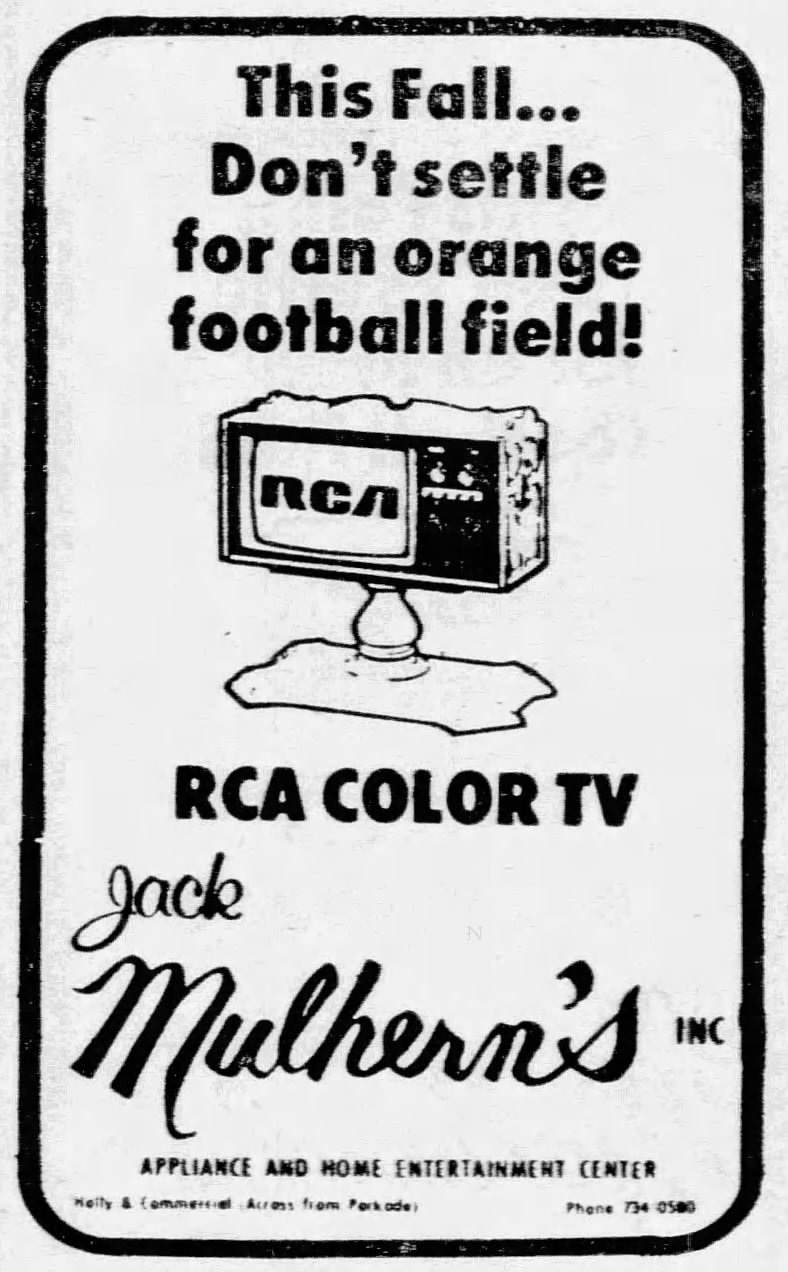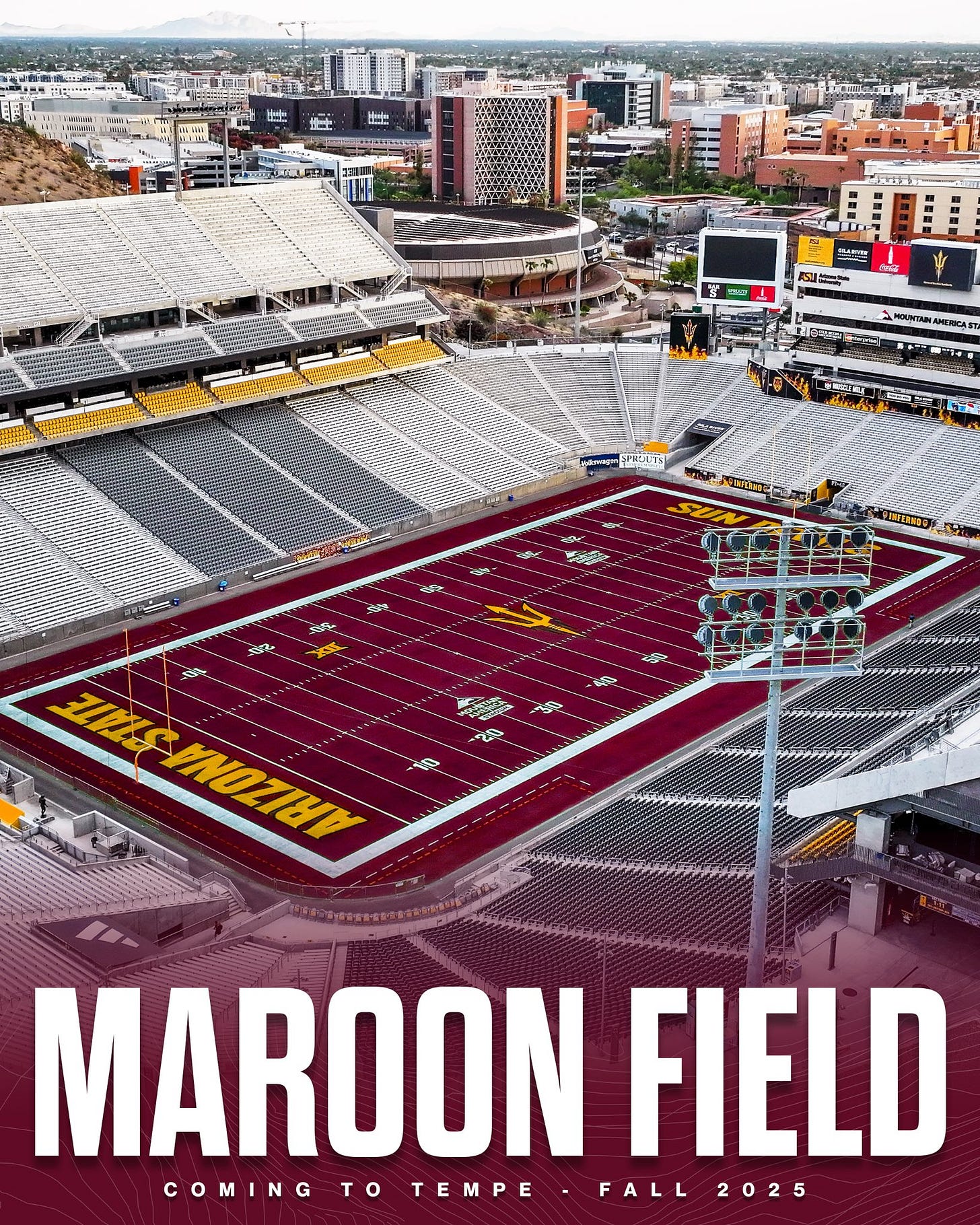Today's Tidbit... Patently Ugly Football Fields
Just because you can doesn't mean you should.
I've written a few times about the emergence of new knits and artificial fabrics in the 1930s that allowed sporting goods manufacturers to offer pants and jerseys with piping, inserts, and miscellaneous striping that resulted in football uniforms with too many stripes. Perhaps taken from the friction strip jerseys that emerged in the late Teens, coaches or whoever designed team uniforms decided that if one uniform stripe was good, two, three, or four would be better. That form of thinking resulted in the 1930s being the decade with football's ugliest uniforms.
Speaking of ugly, Arizona State recently pulled an April Fool's joke by posting an image of their new maroon and gold football field, which appears as painfully ugly as every other football field in the world that is not green.
Still, the ugliness displayed on April 1 inspired me to look into the origins of non-green football fields, henceforth known as NGFFs. Like uniforms with too many stripes, NGFFs are an abomination and another instance of the faulty "just 'cuz you can" thinking.
Going into the research, I assumed Boise State was to blame for all this nonsense, which proved true. A newspaper search for "red football field," "blue football field," and a handful of other colors resulted in lots of hits, but almost all involved towns named for colors (e.g., Orange, NJ) or phrasing such as the Blue and Gold football field. There were also occasional dirt fields of orange or red clay, and at least one ad for a television store telling football fans that it was time to replace their TV set when the football field appeared orange. The ad for the Bellingham, Washington, store makes it clear that it would be nonsensical for a football field to be a color other than green, so if your field is not green, you have a problem.

That line of reasoning fell on deaf eyes in 1986 when Boise State, then a DI-AA member of the Big Sky Conference, needed attention in the worst way and chose the worst way. It was time to replace their artificial turf, and Gene Bleymaier, Boise's AD, asked the question no one needed answered: "Hey, Mr. Artificial Turf guy, can you make artificial turf in a vibrant blue so ugly that people in 2024 will find it annoying to watch our games, even when we have Ashton Jeanty in the backfield?" Mr. Artificial Turf guy told Bleymaier that they could create the desired eyesore and, against everyone's best judgment, they did so.
Apparently, Boise still takes pride in their blue field, much like the handful of small towns that claim to have the world's largest ball of twine, but who am I to judge?
Since the TV ad about the orange field came from Bellingham, Washington, and Boise is in Idaho, the next NGFF appeared partway in between, in Cheney, Washington, on the campus of Eastern Washington, in 2010. By then, 24 years had passed, and no one else thought copying Boise would be a good idea. Perhaps the Eagles were as desperate for attention as the ball of twine guys because they opted for a red field.
My previous story concerned using generative AI to display football concepts for which photographs are not available. While I have some reservations about using them, I figured I could illustrate the absurdity of NGFFs by creating an image of the 1876 Yale-Princeton game played on a red artificial turf field. What could be nuttier than that?

Since Eastern Washington's folly, other schools have followed with gold or sandy-colored fields, gray, and even gray and maroon stripes every five yards. Every one of them is an attention-getter that your subdivision Homeowners' Association would and should have covenants against.
The last bit of absurdity about NGFFs is that despite rumors that Boise has a patent on NGFFs, it does not. Instead, Boise obtained a trademark for its silliness. The trademark is good, even if it only gets others to think twice about skipping with Dorothy and Toto down the yellow-brick road.
Click Support Football Archaeology for options to support this site beyond a free subscription.




Tim’s dry humor and witty writing is at full throttle here…
This is one of those rare times when I feel fortunate to be color blind.